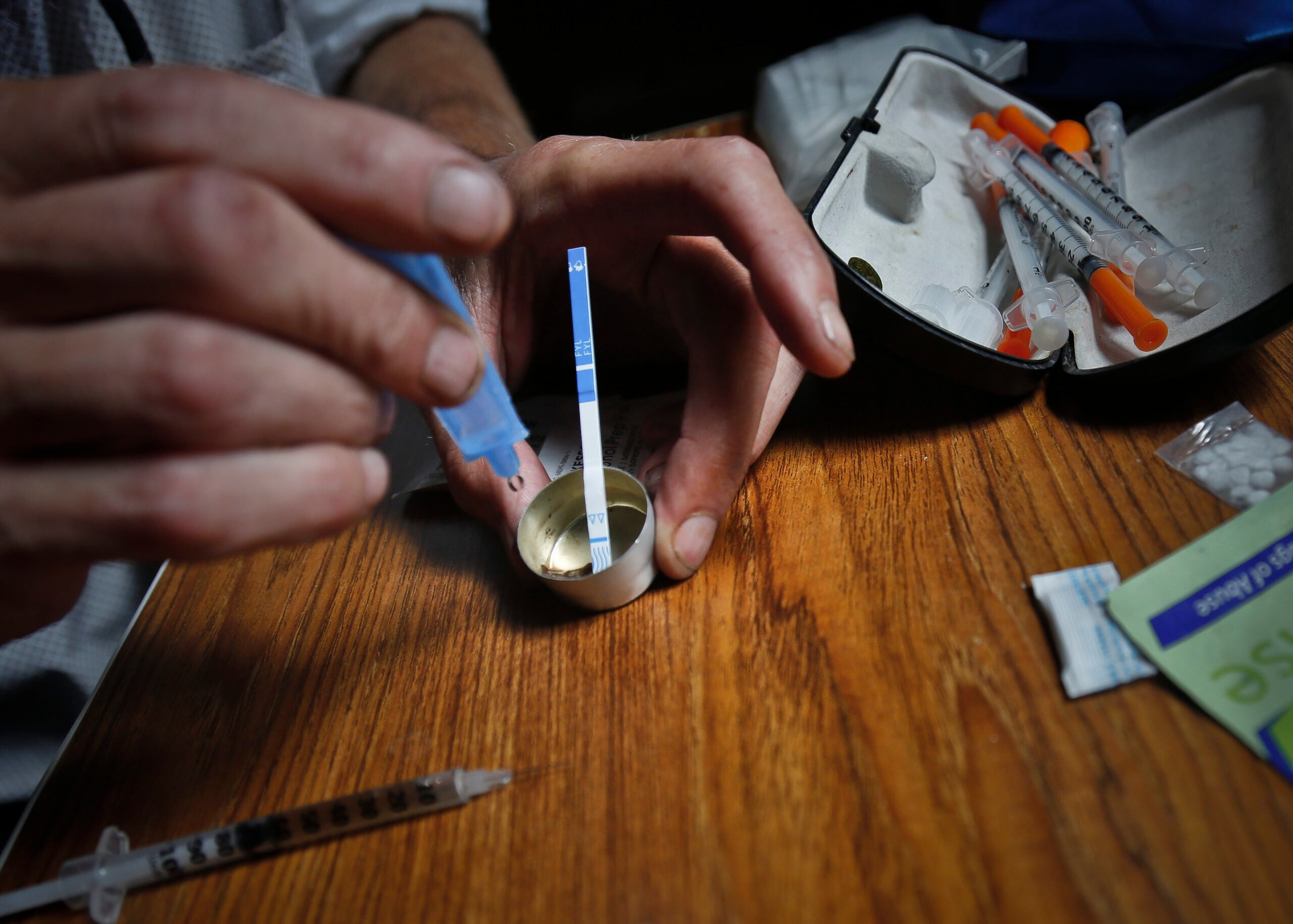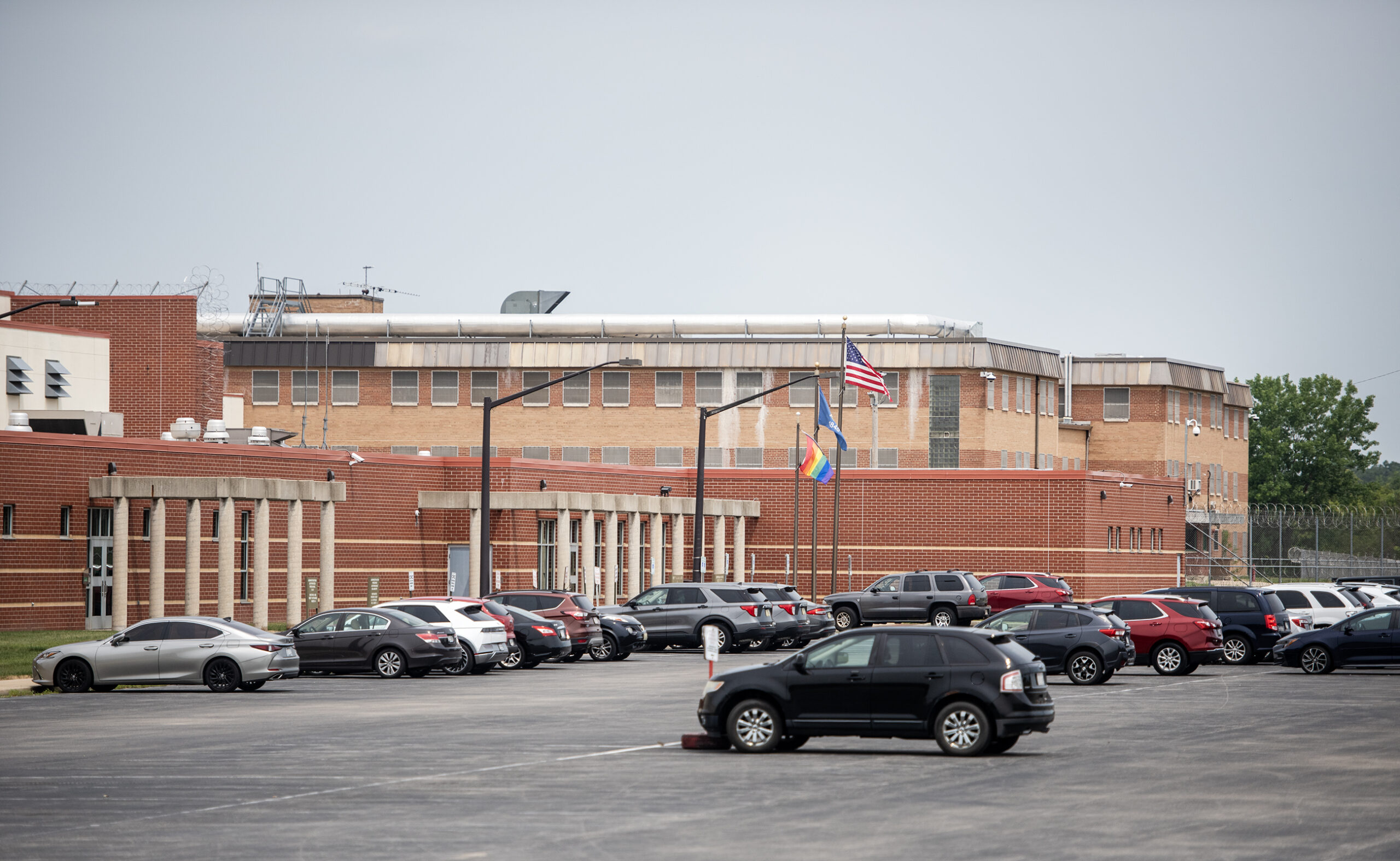This winter a 911 call in Waukesha County drew national attention.
“What’s going on?” A dispatcher asked.
“I think my dad’s dead. He’s not waking up or anything,” a young boy answered. He was calling from a cell phone inside his father’s car.
Stay informed on the latest news
Sign up for WPR’s email newsletter.
After trying to get some information about the location of the car, the dispatcher asked, “Ok, is it just you two in the car?”
“No, it’s all three of us,” the boy said. “My two brothers and my dad.”
Emergency responders arrived minutes later and the father of the three boys — ages 4, 6 and 8 — survived what turned out to be an overdose.
The calls that come after emergencies like these are becoming routine for Vickie Smith. She oversees foster care for Waukesha County. She says they’ve always gotten calls about parents who are too intoxicated or high to care for their children.
“What’s been happening recently is that a parent is overdosing either on heroin or opiates. We’ve had quite a few kiddos who have found their parents unconscious and called law enforcement,” she said.
The number of opioid overdoses that resulted in a hospital encounter more than doubled from 2006 to 2014, to nearly 3,000. The fallout from incidents like those are straining Waukesha County’s available foster homes and Smith hopes to add 40 more foster families to their roster this year.
Waukesha County data shows reports to child protective services rose about 5 percent from 2015 to 2016. Preliminary data show referrals rose 2.3 percent statewide. But it isn’t just the number of cases that’s up.
“The severity of cases when we’re actually getting them are increasing,” said Kathy Mullooly, who heads intake and child services for the county. “Where we need to go out right away, within 24 hours and provide for the safety of those kids. That type of work has increased.”
Dedicated staff answer incoming calls all day long. When an investigation finds a reason to intervene, the case is assigned to a social worker like Linda Senger. In 2016 the number of cases the county took on rose 11 percent. Sender has been doing this work for more than 25 years.
“I would say last five to eight years is when it really started hitting us, the prescription medication,” Senger said. “And now heroin is what we’re seeing. The majority of my caseload currently, with the exception of a couple of cases, it’s heroin.”
Senger manages about nine cases at a time. Each one can involve two or more parents and multiple children placed in multiple foster homes. And she’s not reaching the resolutions she used to.
“It’s a tougher issue to deal with treatment wise,” she said. “We’re not seeing the success stories that we did years ago with someone who was addicted to cocaine. It’s a different animal.”
A recent Wisconsin Counties Association report found rising turnover among child protective service workers due to to larger caseloads and exposure to traumatic scenes.
Still, Senger’s work isn’t always bleak. There are cases that end with reunified and stabilized families.
“Those few cases where a heroin addict mother was able to turn it around, it was support., support, support, support,” she said.
One form the support comes in is a rethinking of the relationship between foster families and biological parents. The county now encourages shared parenting where the families communicate regularly and even attend county-run events together.
But Senger said more formal supports like affordable housing and other services are harder to come by than they were when she started with the county
Mullooly said the stressful reality is limited county funds have to serve residents, from the elderly to veterans, with a wide variety of needs.
“As things are increasing, to provide same type of quality service, the same safety nets we put in place for the public are expensive and they’re important and we want to do things right,” she said.
But Senger worries about the long term costs of not being able to give families the support they need.
“Our kids need permanence,” she said. “Who’s going to care for them? Kids are losing their parents, not just to an addiction, but because their parents are dying. I don’t have the answers, but from where I sit, it’s not getting better.”
The counties association called for a roughly $13.5 million to state funding for child and family aids over the next two years to meet these needs. The governor and state legislators agreed to hike that funding by $6.25 million in the state’s next two-year budget instead.
Correction: An earlier version of this story cited an increase in reports to Waukesha County child protective services of 16 percent. That rate was a county projection. The actual rate was 5.05 percent. It has been updated.
Editor’s Note: This story is Part 3 of a three-part series exploring how children in Wisconsin are impacted by opioids.
Wisconsin Public Radio, © Copyright 2024, Board of Regents of the University of Wisconsin System and Wisconsin Educational Communications Board.






